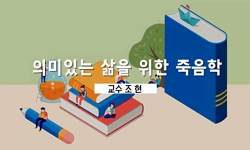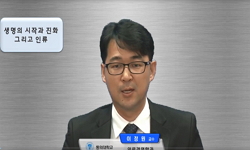죽음의 대척점에는 삶이 존재한다. 전통적으로 호흡과 맥박이 완전히 멈춘 심폐사를 죽음으로 인정해 왔던 반면에 현재 법적으로 인정되고 있는 뇌사는 뇌의 완전한 기능정지만으로도 죽음...
http://chineseinput.net/에서 pinyin(병음)방식으로 중국어를 변환할 수 있습니다.
변환된 중국어를 복사하여 사용하시면 됩니다.
- 中文 을 입력하시려면 zhongwen을 입력하시고 space를누르시면됩니다.
- 北京 을 입력하시려면 beijing을 입력하시고 space를 누르시면 됩니다.
https://www.riss.kr/link?id=A101309764
- 저자
- 발행기관
- 학술지명
- 권호사항
-
발행연도
2015
-
작성언어
Korean
-
주제어
생명 ; 죽음 ; 뇌사 ; 자기결정권 ; 필립 아리에스 ; life ; death ; brain death ; self-determination ; Phillipe Aries
-
KDC
100
-
등재정보
KCI등재
-
자료형태
학술저널
-
수록면
199-224(26쪽)
- 제공처
-
0
상세조회 -
0
다운로드
부가정보
국문 초록 (Abstract)
죽음의 대척점에는 삶이 존재한다. 전통적으로 호흡과 맥박이 완전히 멈춘 심폐사를 죽음으로 인정해 왔던 반면에 현재 법적으로 인정되고 있는 뇌사는 뇌의 완전한 기능정지만으로도 죽음의 판정이 가능하다. 뇌사를 인정하는 이유는 회복 불가능한 상태에서 무의미한 첨단의료기술의 개입을 중단하기 위해서이다. 하지만 무엇보다 장기이식을 위한 신선한 장기의 공급을 위해서이기도 하다. 이런 뇌사판정에는 윤리적, 법적 차원의 논쟁점뿐만 아니라 생물학적으로 해결되지 않은 문제들이 있어, 지속적인 논란거리가 되고 있다. 이에 본 논문은 죽음이란 무엇인가라는 물음을 생명의 생물학적 정의를 통해서 살펴보면서, ‘생명’과 ‘죽음’이 ‘그 자체로 본질적인’ 실체에 대한 개념이 아니라 일련의 과정임을, 그리고 복합적 특징을 갖는 통합적 메타개념임을 밝힌다. 생명과 죽음은 개념적으로 모순대립의 성격을 가지며 서로가 서로를 배제하지만 인간의 죽음에는 뇌사와 같이 죽어가는 과정인 중간 영역이 존재한다. 그래서 인간의 죽음은 생물학적 죽음만을 의미하지 않으며, 죽음이 생물학적 사건인 동시에 규범적 사건이다. 산업화와 도시화가 본격적으로 진행되기 이전에 죽음은 친숙한 자연현상이었으며 죽어가는 자가 자신의 죽음에 대한 주도권을 갖고 이를 받아들였다. 그러나 19세기 후반부터 죽음은 불쾌와 혐오의 대상으로 변화하며 일종의 질병으로 간주되기 시작하였다. 죽음을 극복하고 은폐하는 공간으로서 병원이 등장하여 죽음의 의료화가 진행되는 동안 사람들은 철저히 자신의 죽음으로부터 소외되어 왔다. 죽음의 존엄성을 되살리고 인간적인 죽음을 맞이하기 위해서는 변화가 필요하다. 죽음에 대한 담론이 공론장에서 활성화되고 죽음에 대한 자기결정권이 인정되어야 한다.
다국어 초록 (Multilingual Abstract)
At the antipode of death is life. While cardiac arrest, which happens when your heart stops pumping blood around your body, was traditionally acknowledged as death, it is today legally admitted that brain death, nam ely the loss of brain function, can...
At the antipode of death is life. While cardiac arrest, which happens when your heart stops pumping blood around your body, was traditionally acknowledged as death, it is today legally admitted that brain death, nam ely the loss of brain function, can be determined as death. The reason why brain death is admitted, is to interrupt meaningless intervention of advanced medical technologies in incurable and irreversible conditions. Furthermore, it is to provide fresh organs for organ transplantation. The determination of brain death is continuously at issue not only because of its ethical and legal controversy, but also because of unsettled biological problem s. In this article I will argue that life and death as such are no concepts of entity, but meta-concepts which are about processes and have complex characteristics, examining the question of w hat is death with regard to biological definition of life. Life and death are conceptually opposites and exclude each other, but in the death of hum an beings there is a grey zone pertaining to dying processes like brain death. The hum an death does not mean just a biological death, because it is not only biological, but also normative event. Before the full-fledged development of industrialization and urbanization, death w as a natural phenomenon, and dying persons took the initiative on his own death and accepted his death. However, after the 19th century death became the object of obnoxiousness and loathing, began to be deem ed a kind of disease, and hospitals emerged as a space that could cover death. As a result, humans have been alienated thoroughly from their ow n death. So it is necessary to revive the dignity of death and to change in oder to meet one’s death. For this it is necessary to stir discourse on hum an death and to concede the self-determination of death.
목차 (Table of Contents)
- [논문개요]
- Ⅰ. 들어가는 말
- Ⅱ. 뇌사란 무엇인가?
- Ⅲ. 생명의 생물학적 정의
- Ⅳ. 죽음의 의료화
- [논문개요]
- Ⅰ. 들어가는 말
- Ⅱ. 뇌사란 무엇인가?
- Ⅲ. 생명의 생물학적 정의
- Ⅳ. 죽음의 의료화
- Ⅴ. 죽음의 자기결정권
- 참고문헌
- 【Abstract】
동일학술지(권/호) 다른 논문
-
- 사회와철학연구회
- 정원규(Jeong, Won-Gyu)
- 2015
- KCI등재
-
- 사회와철학연구회
- 임경석(Lim, Kyung-Seok)
- 2015
- KCI등재
-
- 사회와철학연구회
- 장은주(Chang, Eun-Joo)
- 2015
- KCI등재
-
- 사회와철학연구회
- 김준수(Joon soo Kim)
- 2015
- KCI등재





 KCI
KCI DBpia
DBpia






